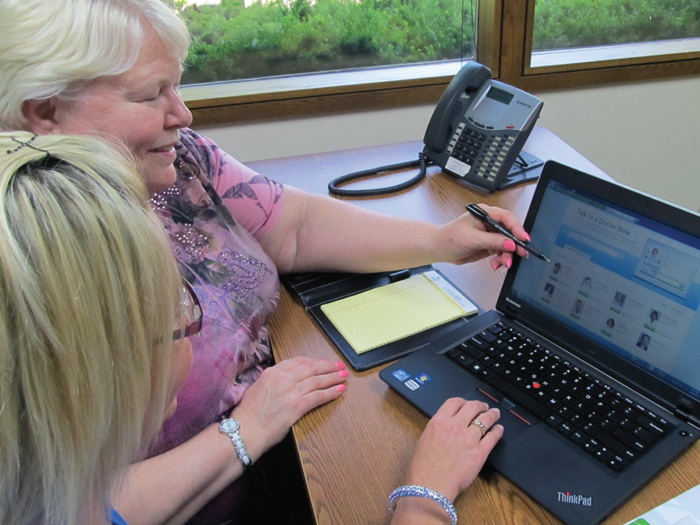How to Manage Workers’ Comp Claims and Litigation in the Age of Technology

It’s undeniable that our lives have gone digital. With so many tools available at the swipe of a finger, injured workers and their employers expect service on demand, 24/7.
Even though the workers’ compensation industry has been slow to adopt technology in the past, there’s been an uptick in new apps, tele-rehab programs and other digital tools flooding the space. On the litigation side of things, defense attorneys are turning to wearable and social media data to support their cases.
Panelists in the session “Workers’ Compensation Claims and Litigation Management in the Age of Technology” discussed the variety of ways new technologies are being used in workers’ compensation and their various benefits and downsides during the 2020 CLM Workers Compensation and Retail, Restaurant & Hospitality Conference.
Technology: A Benefit or Health Threat?
Over the last few years, technology has exploded both within workers’ compensation and in the broader health care space.
Doctors use telemedicine to reach patients in rural areas and virtual visits can be used to help patients with anything from filling a prescription to answering a basic medical question.
COVID-19 only accelerated this growth, with many providers turning to telemedicine once their brick and mortar facilities shut down.
“Through crisis, you truly drive innovation,” said Dorothy Riviere, chief clinical officer, Bardavon Health Innovations LLC.
“We don’t want to see claims get prolonged, because we know the longer they stay open the more expensive they get,” added Caryn Seibert, vice president carrier practice, at Gallagher Bassett Services.
Prior to COVID-19, technology was already playing a greater role in workers’ compensation claims and many in the industry believe it will continue to grow even after the pandemic is over.
A poll of session attendees found that 62.1% expect telemedicine to increase after COVID-19 is over.
Technology may be expanding in workers’ comp, but an increased use of digital tools doesn’t always have a positive affect on people’s health. As more and more people work sedentary jobs that rely on technology, overall health is declining.
“Technology has exploded in use,” Riviere said, “but is it making us more healthy? That’s something also that the data is not [true]. We know that there’s been an 83% rise in sedentary jobs since 1950.”
The use of technology can also drive up claims costs without necessarily achieving better outcomes. With workers’ compensation costing nearly $70 billion a year, it’s important for employers and providers to make sure that the technologies they do invest in is worth the money.
“We know that costs continue to go up. We know that we spend $3.5 trillion in healthcare, $900 billion of that is in musculoskeletal health and $70 billion of that is in workers’ compensation,” Riviere said.
“Even though that cost continues to grow, are we getting more value out of the system? The data would say that we’re not.”
Going Beyond Claims Data
In order to make sure employers are getting the most for their money, workers’ compensation insurers need to make sure adjusters are capturing data from all types of workers’ compensation claims.
“We’re talking about technology first and about our great claims professionals second, because it’s how those great claims professionals use that technology to capture data, to set their reserves, to exchange information with service providers and attorneys, and really make the whole process more efficient,” Seibert said.
The data adjusters collect must go beyond claims data, Riviere explained. Clinical data has valuable insights into what providers prioritize and it helps insurers and insureds understand where money is being best spent. They may need to work with clinicians to collect this information, however.
“In order to make that change we need to go beyond claims data,” Riviere said. “We can drive the clinicians to collect the right information and understand that that data is valuable and can understand overall outcomes … It illuminates what the overall focus of the providers are.”
Using Social Media in Litigation
Technology isn’t just being used to collect claims data and improve treatment in workers’ compensation, however.
Data from social media and smart devices can also be used in litigation. This is especially true of wearable devices, such as Fitbits and Apple Watches, which often collect data on a user’s health.
“The health and exercise data … that can be gleaned from these wearable devices can be very important,” said attorney Jennifer Jones of the law firm Cranfill, Summer and Hartzog LLP.
“Wearable device data can help demonstrate whether a person may have altered date during the discovery or litigation process … A party may delete text message from a smartphone, but they may not be deleted within their Apple Watch.”
In addition to data from wearables, information an injured worker posts on social media can be relevant to litigation. “Social media creates a treasure trove of relevant data that can be used in litigation,” Jones said.
While social media and data from wearable devices can be used in litigation, it must adhere to the Rules of Evidence. The data must be authentic and relevant to the litigation, among other requirements. &










